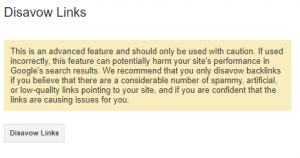— April 9, 2019
Once or twice a year we like to take a look at what is going on in the world of reserved instance pricing. We review both the latest offerings and options put out by cloud providers, as well as how users are choosing to use Reserved Instances (AWS), Reserved VMs (Azure) and Committed Use (Google Cloud).
A good place to start when it comes to usage patterns and trends is the annual Rightscale (Flexera) State of Cloud Report. The 2019 report shows that current reservation usage stands at 47% for AWS, 23% for Azure and 10 percent of GCP. These are some interesting data when you view them alongside companies overall reporting that their number one cloud initiative for the coming year is optimizing their existing use of the cloud. All of these cloud providers have a major focus on pre-selling infrastructure via their reservations programs as this provides them with predictable revenue (something much loved by Wall St) plus also allows them to plan for and match supply with demand. In return for an upfront commitment they offer discounts of ‘up to 80%”, albeit much as your local furniture retailer has big saving headlines, these discount levels still warrant further investigation.
While working on an upcoming new feature release we began to dig a little deeper into the nature of current reserved instance pricing and discounts. From our research it appears that a real world discount level is in the 30%-50% range. To achieve some of the much higher level discounts you might see the cloud providers pushing, typically requires commitments of three years; being restricted to only certain regions; restrictions on OS types; and generally a willingness to commit to spending a few million dollars.
Reservation discounts, while not as volatile as spot instances, do change and need to be carefully monitored and analyzed. For example as of this writing, one of the more popular modern m5.large instance types in a US East Region costs $ 0.096 per hour when purchased on demand, but reduces to $ 0.037, a significant 62% saving. However, to secure such a discount requires a three-year commitment and prepayment in full up front. While the numbers of such organizations committing to contracts of this nature is not publicly known, it is likely that only the most confident of organizations with large cash reserves would be positioned to make a play like this.
Depending on the precise program used to purchase the reservations, there can be certain options to either convert specific instance families, instance types and OS’s for other types or even to resell the instances on a secondary exchange for a penalty fee of 12%, on AWS for example. Or to terminate the agreement for the same 12% fee on Azure. GCP’s Committed Use program seems to be the most stringent as there is no way to cancel the contract or resell pre-purchased instances, albeit Google does not offer a pre-purchase option.
As the challenge of optimizing cloud spend has slowly moved up the priority list to take the #1 slot, so has a maturation process taken place inside organizations when it comes to undertaking economic analysis and understanding the various tradeoffs. Some organizations are using tools to support such analysis, others are hiring consultants or using in house analytics resources. Whatever the approach in terms of analyzing an organization’s use of cloud, this typically requires looking at balancing the purchase of different types of reservations, spot instances or using on-demand infrastructure that is highly optimized through automation tools. Whatever the approach, the level of complexity in such analysis is certainly not reducing, and mistakes are common. However, the potential savings are significant if you achieve the right balance and is clearly something you should not ignore.
The relative balance between the different options to purchase and consume cloud services in many ways reflects the overall context within which organizations operate, their specific business models and broader macro issues such as the outlook for the overall economy. Understanding the breadth of options is key and although for most organizations, reservations are likely to be a key component it is worth digging into just how large the relative trade offs might be.
Business & Finance Articles on Business 2 Community
(41)








